A comprehensive guide to purchasing a snow plough, with all the main technical elements to be evaluated for a correct and appropriate choice.
The Complete Guide to help you choose the Best Snow Blower
by the Real Experts of Machinery for Outdoor Cleaning and Maintenance
Choosing the best snow blower may seem complicated, but knowing the main technical elements of these machines can make it easier to find your way around the various types available on the market. In this purchasing guide we will try to shed some light on this tools and help you make the best choice.
Before going into detailed explanations, it is better to make an initial subdivision of snow blowers according to the engine type:
- Petrol snow blowers (they account for 90% of the market for this category of machines);
- Snow blowers with 230 V electric motor
- Battery-powered snow blowers.

CONTENTS
1. Petrol snow blowers
They are by far the most popular item among snow blowers. They can be small, medium or large in size and come in two variants:
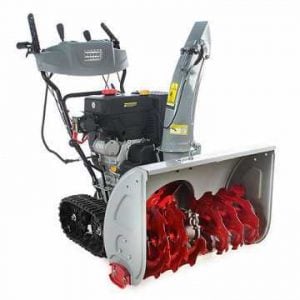
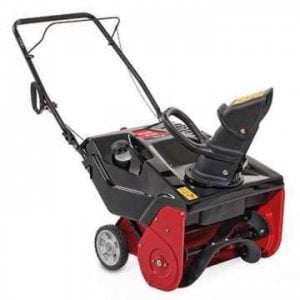
- Hand-pushed snow blowers: prove to be particularly suitable for small areas (up to 150 square metres) and for low layers of snow (usually up to 20 cm of powdery and not compact snow) and feature a very small auger that does not exceed 50 cm;
- Self-propelled snow blowers: they are the most widely sold type. Depending on the size (small, medium or large) they can be used on more or less extensive areas; the auger mounted on these models ranges from 50 to over 80 cm.
1.1 Self-propelled snow blowers with petrol engine
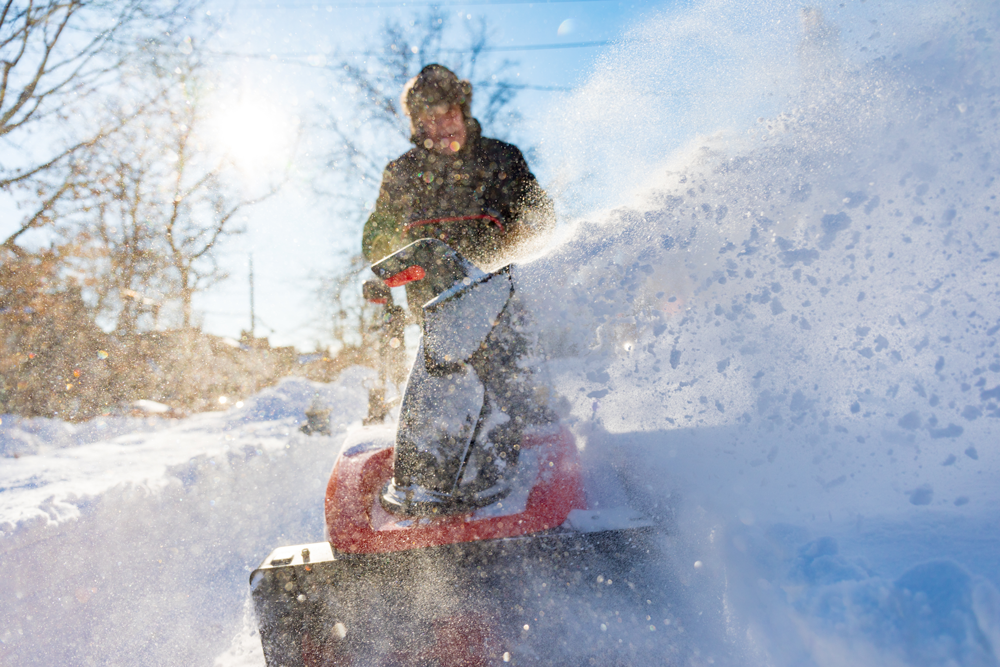
Smaller models of self-propelled snow blowers are generally single-speed, while all medium and large models feature a variable drive. The most popular versions can have:
- 4 gears + 1 reverse
- 5 gears + 1 reverse
- 6 gears + 1 reverse
For information only, there are versions on the market equipped with hydrostatic gearboxes: super-professional models designed for use by institutions to clean large roads or public areas.
The high number of gears allows the snow blower to have a wide speed range – from very low to higher – which translates into high versatility of use. This feature has numerous advantages especially for dealing with the most diverse conditions of use as below:

- Height of the snowpack: if the snowpack is very high, a low gear is ideal to enable the snow blower to clear it more efficiently, while a high gear is more performing on low snowpacks;
- Snow consistency: if the snow is powdery, a high gear can be used, as the fan must be completely full of snow to throw it at an adequate distance; vice versa, in the case of heavier, “watery” snow, due to a higher outside temperature or, on the contrary, frozen snow, in the event of prolonged cold temperatures, a low gear can be used, which is able to “grip” the snow better, especially because the turbine needs much more time to dispose of it.
On medium to large machines, there is often the assisted steering, which greatly facilitates the manoeuvrability of the snow blower. This device is activated by means of a lever on the controls that turns the wheels or tracks in different directions and guarantees great manoeuvrability by helping to make turns with little effort; by activating the left-hand knob, for example, the machine will smoothly steer to the left.
1.2 The auger
The size of the snow blower also entails a different size of auger:
- Very small auger: with a width under 50 cm, is generally present on hand-pushed models;
- Small auger: has a width between 50/60 cm, usually mounted on self-propelled two-stage models;
- Medium auger: between 60/70 cm of width, for self-propelled two-stage models;
- Large auger: width of over 70 cm, for self-propelled two- or three-stage models.
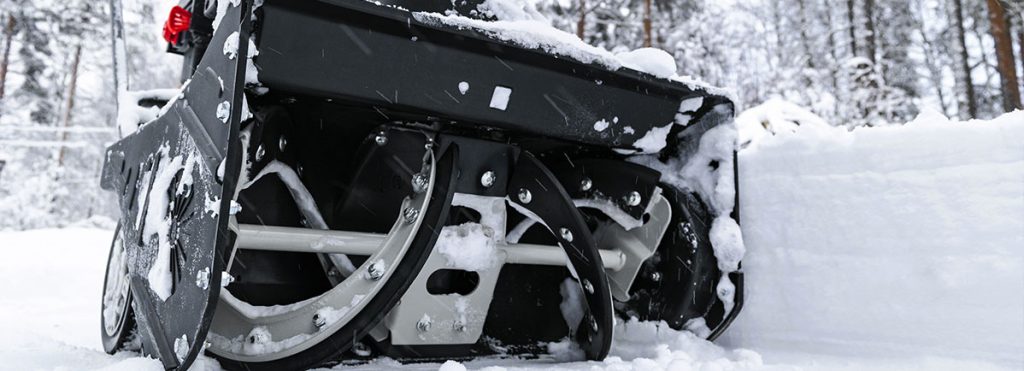
As already mentioned, the models can be:
- SINGLE-STAGE: these are usually hand-pushed models and their power does not exceeds 4 Hp. The auger collects the snow and ejects it directly from the discharge chute;
- TWO-STAGE: 90% of the products on the market belongs to this type, i.e. they consist of an auger that cuts the snow and conveys it towards the discharge chute, where an additional rotating fan expels it with greater force;
- THREE–STAGE: In the first stage, two horizontal side turbines convey the snow towards the centre where another turbine, in a central longitudinal position, channels the snow towards the rear of the turbine: thanks to this movement, the turbine can work with any type of snow, whether compact or icy. In the third stage, a rotor spinning at high speed will push the snow out through the discharge chute.
A useful starting point for making the right choice are the characteristics of the surface to be cleaned.
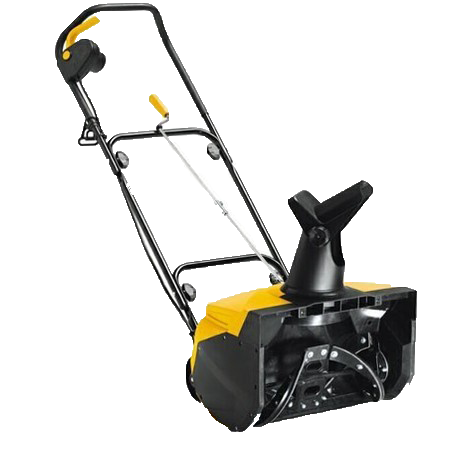
For a small area (up to 150 square metres) and a layer of between 5 and 15 cm of not compact, powdery snow, single-stage electric models prove to be very practical.
This type of machine is generally hand-pushed: it collects the snow with a soft-bladed auger and ejects it directly from the discharge chute; it is a perfectly suitable model when there is the possiblity to use a sufficiently long power cable.
The advantages of a single-stage model are:
- the care of the surfaces to be cleaned, proving to be ideal in the presence of pavements or concrete, tile and even wood floors. The width of the auger varies between 30 and 40 cm and allows snow to be cleared on paths and driveways right up to the base. As the auger of the single-stage snow blower actually comes into contact with the roadbed, it must not be used on surfaces with gravel;
- lightweight and easy to handle and store, depending on the model, it can also be easily transported in the trunk of the car;
- suitable for work on sloping surfaces;
- purchase, maintenance and storage costs are significantly lower than for petrol snow blowers.
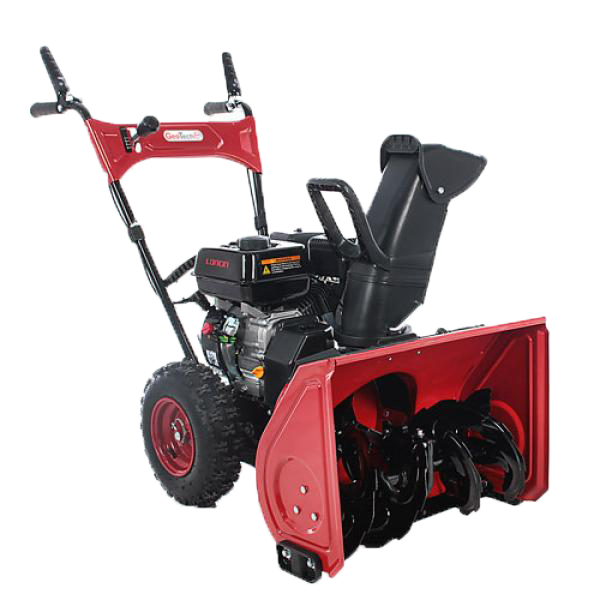
For an average surface area (between 150 and 300 square metres) a further distinction must be made according to certain elements:
for a surface as indicated in the previous example (concrete, tiles, wood, etc.) and a snow cover of 15/20 cm, a petrol single-stage model with a 50 cm auger is recommended;
while, for a roadbed with gravel or non-delicate flooring, with a snow cover (whether soft or icy) of no more than 30 cm, a two-stage model, i.e. equipped with an auger that cuts the snow and expels it from the discharge chute via a fan, is recommended.
For larger areas (over 300 square metres), two-stage petrol snow blowers are more suitable. They are fast and efficient and can be fitted with one or more gears, but have the disadvantage of being noisier and more expensive than other models:
for surfaces with gravel, the best choice is two-stroke petrol snow blowers, which have a more powerful engine and additional traction, making it easier to work on higher and more extensive snowpacks.
For a large terrain it is preferable to choose the best snow blower with an auger that reaches 70 cm in width
There are also three-stage models on the market:
In the third stage, a rotor spinning at high speed will push the snow out through the discharge chute, with a maximum distance of up to 18 metres.
When choosing the best snow blower, however, it must be taken into account the number of snowfall in the area where it will be used: if there is normally little snowfall, it is preferable to choose a model with a more powerful motor and a smaller auger, as the fan must be completely filled with snow to be able to throw it at an adequate distance; if the layer of snow is thin and the auger high (e.g. 10 cm of snow for a 30 cm cutter), the discharge distance will decrease considerably to the point of being insufficient. In these situations, a large, powerful machine will be less performing than a small, underpowered one.
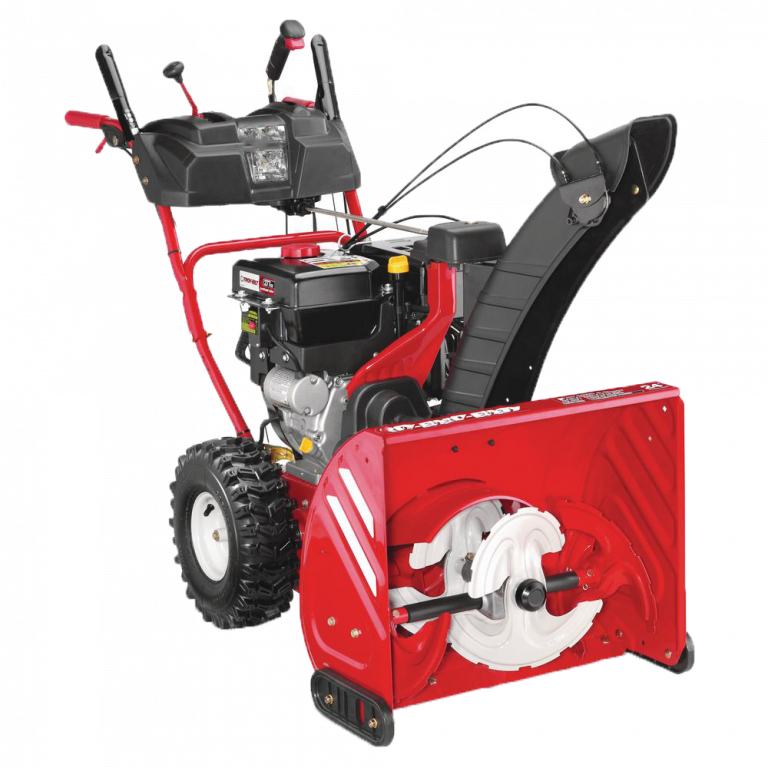
If, on the other hand, the area is characterised by high snowfall, then it is better to move towards a snow blower with a auger compartment height of at least 30 cm.
In any case, too short a radius of the snow discharge jet, especially if the snow is wet and heavy, can make the work more difficult than expected as the machine may throw it onto the already cleared portion of surface.
*Three-stage machines are the most recently introduced and most modern machines on the market. However, very few models have adopted this system, as the two-stage system already functions very well, having a very high capacity to work in all snow conditions, even the most difficult, unlike single-stage machines, which are increasingly outdated and obviously do not deliver the same efficiency.
Thanks to the height-adjustable slides, two- and three-stage models can be adapted to different conditions of the roadbed to be cleaned:
- if the surface is smooth and even (asphalt, concrete, flat ground without stones, etc.), the auger can be lowered to the ground by adjusting the slides, for extremely effective cleaning;
- if instead the ground is uneven, bumpy or contains gravel or stones, the height of the auger can be increased by adjusting the slide, in order to avoid collecting material that could damage the machine.
1.3 Wheels or tracks?
Snow blower models can have a wheel or track drive configuration.

The wheeled model is the best-selling and most versatile: ideal on yards, driveways, concrete or asphalt ramps, the small bearing surface area of the wheel provides the snow blower with more thrust. In general, they are extremely agile; indeed, their size allows them to turn around even when in the presence of side walls of snow.
Snow chains are also available for pneumatic tyres.
The wheels allow the snow blower to be used on areas with a gradient of up to 5-8%, while use with chains makes it possible to operate the machine on slopes of up to 15-18%. Wheeled snow blowers, even with chains, are not recommended on steeper slopes.
The larger models are also available in the tracked version. The larger bearing surface improves traction and has exceptional adaptability to the ground due to the flexibility and softness of the tracks themselves. It can also be used on uneven, gravel-covered surfaces or on slopes of up to 18-20%.
Tracked systems can be of two different types:
- 2-roller track (the classic flat-shaped model);
- 3-roller track (the most recent version, triangular-shaped).

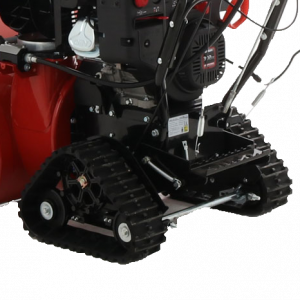
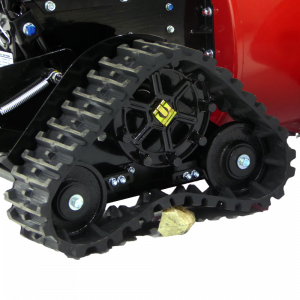
Some tracked models allow operation with different auger settings, which can be adjusted by operating a foot pedal:
- asset for normal use
- transport asset (the auger compartment is raised off the ground, making it easier to move the machine)
- asset for very hard snow: the auger has a greater inclination towards the ground, thus exerting greater pressure that will enable the machine to sweep out hard, compacted snow more effectively (photo of the assets and the pedal).
1.4 The engine
The engines fitted on snow blowers come in a variety of power ratings that can be divided into three main classes:
The most popular brands on the market are definitely Briggs & Stratton (American engine by a renowned reference brand for the category) and Loncin (Chinese-made engine with a very competitive price and excellent quality).

All manufacturers also offer winterised engines, i.e. made with external protection that makes it more suitable for use in cold temperatures. They are fitted on almost all higher range models: indeed, it is rare to find a 10 HP engine that does not have this feature.
The classic engine start is done manually, with a “pull” cord, which can be difficult to use, especially in freezing conditions, but in models that mount engines with 7/8 HP onwards, it is very common to find an electric start as standard: this consists of connecting the snow blower to the mains power supply via a plug, just long enough to start it. These machines remain stationary for long periods and are exposed to very low temperatures, for these reasons, they are not equipped with a battery, which would be subject to rapid discharge. In the event of a shutdown during use, it will be possible to manually restart the motor (already warm), easily and without having to reach for the electrical outlet.
1.5 Accessories and equipment
As already mentioned, snow chains are available for pneumatic wheels, but the snow blower can come with other useful accessories:
- some models have heated grips for exceptional working comfort;
- the adjustment of the discharge chute can be manual or electric and it is used to move the jet of snow to the right or left; the discharge chute in turn can feature a deflector that can be adjusted to different heights;
- some models feature an upper deflector on the auger compartment, which proves to be very useful when snowdrifts are particularly high and large; it improves the machine’s performance by easily channeling a layer of snow inside the auger that is even much higher than the auger itself;
- LED lights, which provide excellent illumination of the surface to be cleaned in low visibility conditions;
- a cover for storage is available for all models;
- ice grips for boots are available for the operator, ideal for ensuring a secure walk, minimising the risk of slipping on snow-covered or icy surfaces.
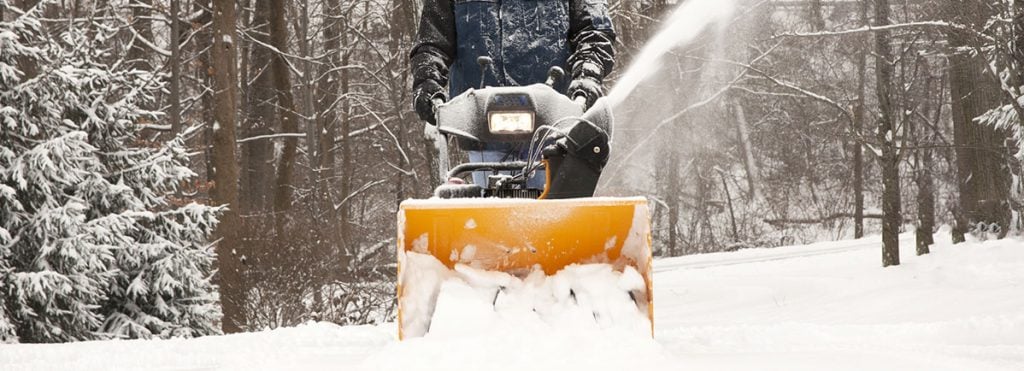
2. Electric snow blowers
Electric models are generally single-stage: the auger collects the snow and expels it directly from the discharge chute, and are ideal on small surfaces in the immediate sorroundings of one’s home, due to the power cable; as with any electric motor, it must always be considered that an excessively long cable or one with an inadequate diameter would lead to a loss of energy and consequently a drop in motor power.
The advantages of an electric model:
- maintenance-free, since the electric motor, as well as the transmission, requires no attention, unlike the internal combustion engine, given that it is mounted on a machine with much simpler construction features;
- lightweight and easy to operate and store, depending on the model it can also be easily transported in the trunk of a car;
- more noiseless operation;
- significantly lower purchase costs;
The limits of an electric model are:
- as mentioned, it is suitable for limited areas and with power sockets within easy reach, so use on larger areas would be effectively impossible;
- is not suitable for deep snow, but only for low snowpacks;
2.1 Versions
There are two versions of electric snow blowers:
- hand-pushed snow blowers, similar in shape to wheeled petrol models, suitable for small areas;
- manual snow blowers, without wheels, to be held off the ground. This model does not touch the ground, but must be held with both hands, thus it has the ‘disadvantage’ of requiring more physical force from the user. It proves to be necessary in all those situations where the classic snow blower takes up too much space or when the surface to be cleaned is very small. It is useful for sweeping passages or pedestrian paths.
2.2 Power
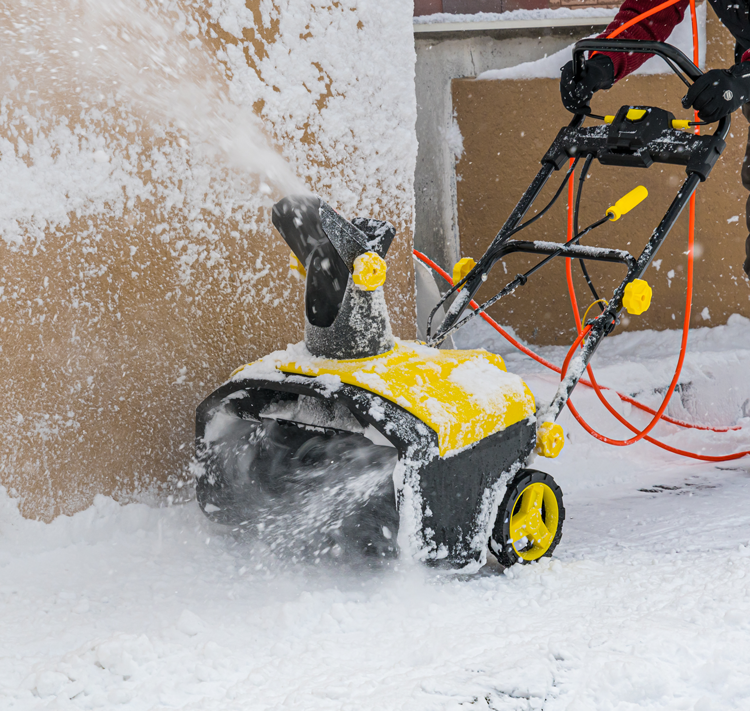
Electric snow blowers can have a power ranging from 800W to 2000W:
- manual models have a power between 800 and 1400W; when choosing this model, it is always recommendable to opt for the maximum power output, to ensure the least effort and maximum performance;
- hand-pushed models usually have a power between 1500 and 2000W, even in this case, it would always be better to choose a power from 1800 to 2000W, which is more effective in the event that the snow cover is exceptionally higher than usual.
3. Battery-powered snow blowers
In terms of size, characteristics and performance, battery-powered snow blowers are very similar to the electric models. They are designed to be used in all conditions. Thanks to their very low weight, the6y can be easily transported; in addiction, some models also feature folding handlebars so that they can be easily loaded into the trunk of the car. They are ideal for soft snow up to 20 cm and are extremely noiseless precisely due to their type of power supply.
Extremely useful for removing snow from driveways, pavings, walkways, garage ramps, gardens, courtyards and pavements, without the need to use a power supply cable or where it is not possible or practical to have a mains connection, it has the advantage of being totally autonomous in its movements.
On the other hand, the disadvantage of a battery-powered model is its cost, which is significantly higher than that of the electric models.
3.1 Versions
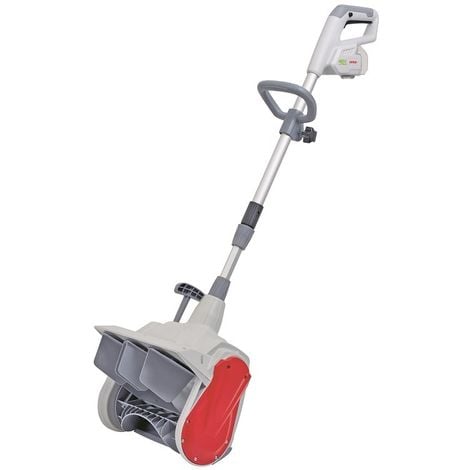
As with the electric models, there are two versions of battery-powered snow blowers:
- hand-pushed snow blowers, similar in shape to wheeled petrol models, suitable for small areas;
- manual snow blowers, without wheels, to be held off the ground. This model does not touch the ground, but must be held with both hands, thus it has the ‘disadvantage’ of requiring more physical force from the user. It proves to be necessary in all those situations where the classic snow blower takes up too much space or when the surface to be cleaned is very small. It is useful for sweeping passages or pedestrian paths.
3.2 Power and autonomy
The power of battery-powered models can vary between 20V (Volts) and 80V; the latter have even higher performance than smaller electric models.
Power also characterises the different models:
- classic hand-pushed models have a power ranging between 36V and 80V, but for best performance it would be better not to go below 40V;
- the manual models have a power between 20V and 24V.
Basically, the higher the voltage, the more powerful the machine and the more effective it will be on high snowpacks.
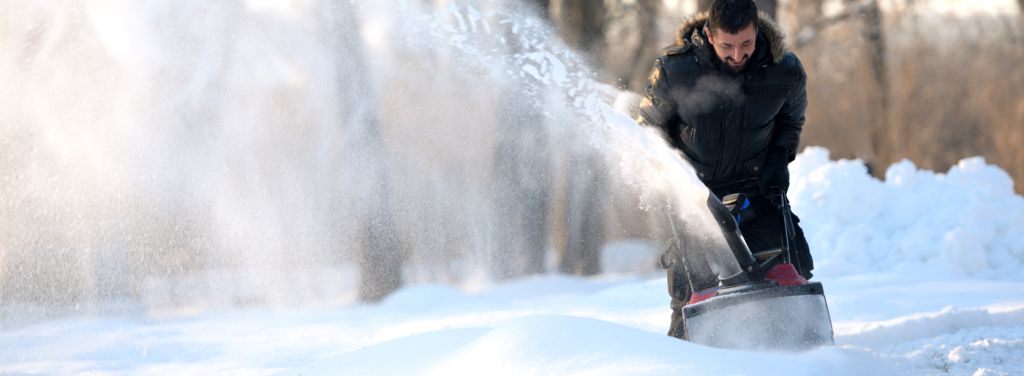
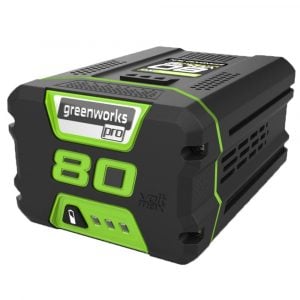

Depending on the battery used, not only the power but also the working autonomy of the snow blower varies. Below are some examples of lithium batteries:
- 80V and 5 Ah (Ampere) battery provides a running time of approximately 60 minutes;
- 80V and 2.5 Ah battery provides a working autonomy of approximately 30 minutes;
- 48V and 5 Ah battery provides a working autonomy of approximately 30 minutes;
- 48V and 2.5 Ah battery provides a running time of approximately 20 minutes.
Compared to other batteries, lithium batteries can be recharged in a shorter time, even if not completely discharged (they have no “memory” effect). More compact and lightweight, they have three times the autonomy of conventional batteries and ensure full power even if they are not used for several months.
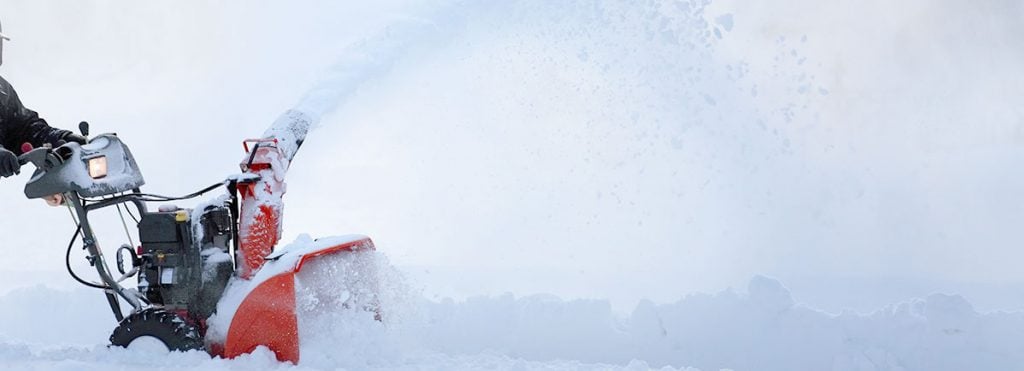




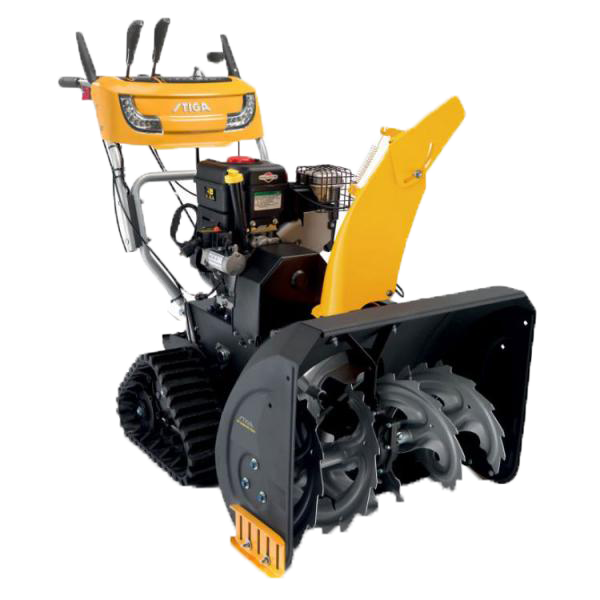
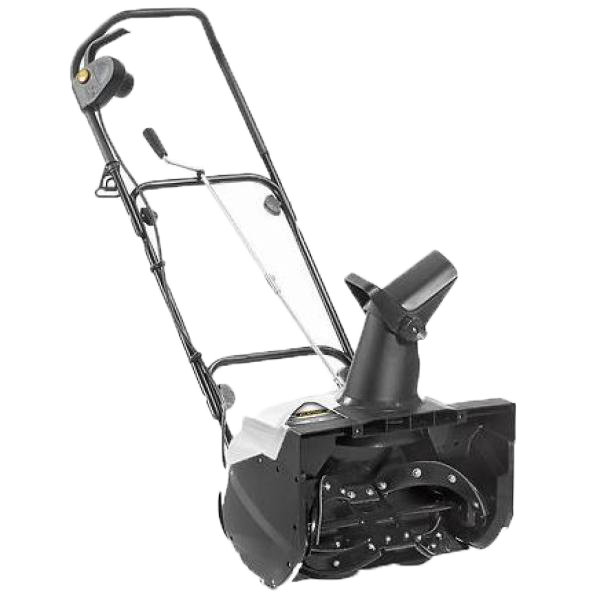
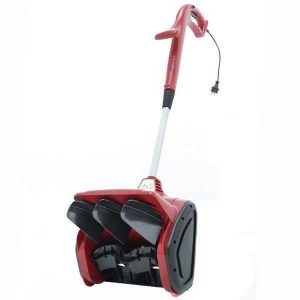


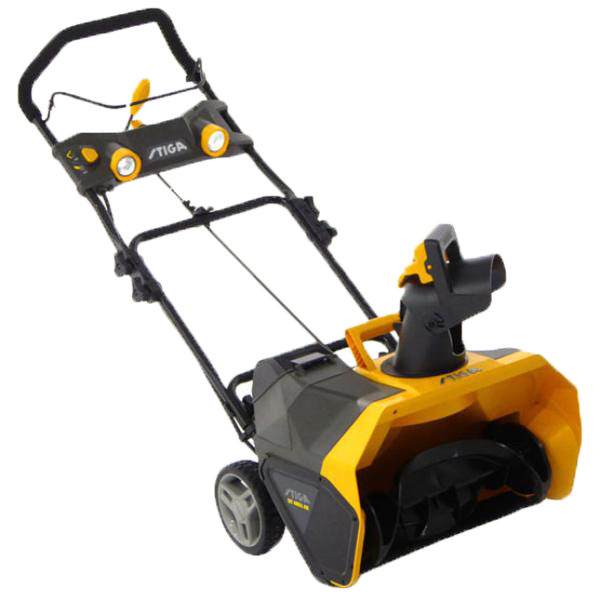

Remona Weinstein
I was able to find good advice from your blog articles.